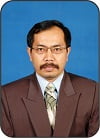The Structure of Ancient Sundanese Language on the Inscriptions
Abstract
ABSTRACT: Sundanese Language (SL) is the second biggest of Regional Languages (RL) in Indonesia, after Javanese Language (JL), spoken, and developed in West Java region. During the era of the kingdoms in West Java region, until 1600 AD (Anno Domini), SL served as the language of the kingdom. The study was aimed at describing the structure of Sundanese language on the inscriptions. The method used in the study was comparative method through immediate constituent analysis; meanwhile, the data were taken from the texts written on the inscriptions found in Sundanese regions. The elements of Sundanese language exposed were word, phrase, and sentence structures. The result of the study showed that Sundanese language was developed from Sanskrit language (from India). In its development, Sundanese language underwent change in both its lexicon and structure. The change in its lexicon was more dominant than that of grammatical structure. The word structures of the texts written on the inscriptions were root word, derivative, reduplication, and compound word. The phrase structures were noun phrase, verb phrase, adjective phrase, numeric phrase, and prepositional phrase. The sentence structures were simple sentence and compound sentence. The sentences written on the inscriptions were in the structure of Subject-Predicate + Object + Adverb with its variation and combination.
KEY WORDS: Sundanese language, structure, lexicon, word, phrase, sentence, Sanskrit language, comparative method, and inscription.

About the Author: Dr. H. Yayat Sudaryat is a Senior Lecturer at the Department of Regional Language Education, Faculty of Art and Language Education UPI (Indonesia University of Education), Jalan Dr. Setibudhi No. 229 Bandung 40154, West Java, Indonesia. For academic interests, he can be contacted via mobile phone at: +628122168925 or e-mail at: kisudaryat_sunda@yahoo.com
How to cite this article? Sudaryat, Yayat. (2014). “The Structure of Ancient Sundanese Language on the Inscriptions” in TAWARIKH: International Journal for Historical Studies, Vol.6(1) October, pp.13-24. Bandung, Indonesia: Minda Masagi Press and UNHAS Makassar, ISSN 2085-0980.
Chronicle of the article: Accepted (August 2, 2014); Revised (September 2, 2014); and Published (October 28, 2014).
Full Text:
PDFReferences
Alwi, Hasan et al. (2008). Tatabahasa Baku Bahasa Indonesia. Jakarta: Balai Pustaka.
Cook, Walter A. (1969). Introduction to Tagmemic Analysis. London: Holt, Rinehart, and Winston.
Danasasmita, Saleh et al. (1984). Sejarah Jawa Barat. Bandung: Kerta Mukti Gapuraning Rahayu.
Darsa, Undang Ahmad. (1991). Identifikasi Bahasa yang Hidup pada Masa Pakuan Pajajaran. Bogor: Seminar Nasional Sastra dan Sejarah Pakuan Pajajaran.
Ekadjati, Edi S. (2006). Nu Maranggung dina Sajarah Sunda. Bandung: Pusat Studi Sunda.
Kridalaksana, Harimurti. (1982). Kamus Linguistik. Jakarta: Gramedia.
Moeliono, Anton et al. (1988). Kamus Besar Bahasa Indonesia. Jakarta: Balai Pustaka.
Ramlan, M. (1987). Sintaksis. Yogyakarta: Penerbit Karyono.
Sudaryat, Yayat. (2004). Elmuning Basa. Bandung: Walatra.
Sudaryat, Yayat et al. (2007). Tatabasa Sunda Kiwari. Bandung: Yrama Widya.
Suryani NS, Elis. (2007). Keanekaragaman Budaya Sunda Buhun. Tasikmalaya: Disdik [Dinas Pendidikan] Kabupaten Tasikmalaya.
Suryani NS, Elis & Undang Ahmad Darsa. (2003). Kamus Bahasa Sunda Kuno — Indonesia. Bandung: Alqa Print.
